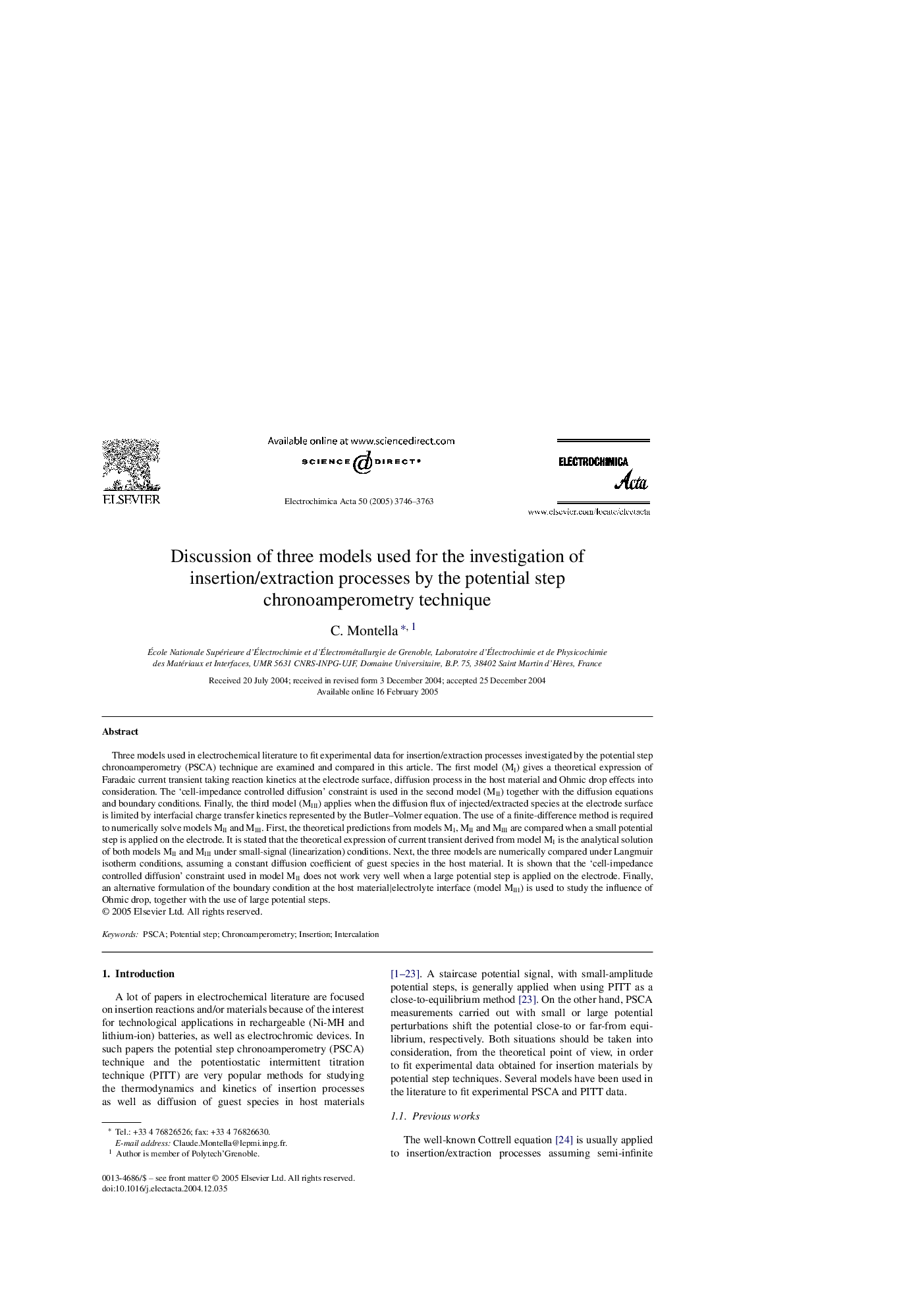| کد مقاله | کد نشریه | سال انتشار | مقاله انگلیسی | نسخه تمام متن |
|---|---|---|---|---|
| 196969 | 459864 | 2005 | 18 صفحه PDF | دانلود رایگان |

Three models used in electrochemical literature to fit experimental data for insertion/extraction processes investigated by the potential step chronoamperometry (PSCA) technique are examined and compared in this article. The first model (MI) gives a theoretical expression of Faradaic current transient taking reaction kinetics at the electrode surface, diffusion process in the host material and Ohmic drop effects into consideration. The ‘cell-impedance controlled diffusion’ constraint is used in the second model (MII) together with the diffusion equations and boundary conditions. Finally, the third model (MIII) applies when the diffusion flux of injected/extracted species at the electrode surface is limited by interfacial charge transfer kinetics represented by the Butler–Volmer equation. The use of a finite-difference method is required to numerically solve models MII and MIII. First, the theoretical predictions from models MI, MII and MIII are compared when a small potential step is applied on the electrode. It is stated that the theoretical expression of current transient derived from model MI is the analytical solution of both models MII and MIII under small-signal (linearization) conditions. Next, the three models are numerically compared under Langmuir isotherm conditions, assuming a constant diffusion coefficient of guest species in the host material. It is shown that the ‘cell-impedance controlled diffusion’ constraint used in model MII does not work very well when a large potential step is applied on the electrode. Finally, an alternative formulation of the boundary condition at the host material|electrolyte interface (model MIII) is used to study the influence of Ohmic drop, together with the use of large potential steps.
Journal: Electrochimica Acta - Volume 50, Issue 18, 10 June 2005, Pages 3746–3763